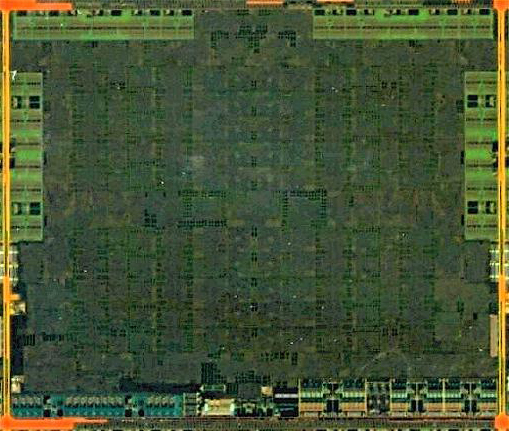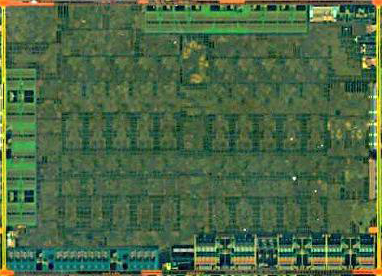First released back in December 2011, AMD's Southern Islands architecture, forming the 7xxx series of graphics cards, has managed to battle toe-to-toe with NVIDIA's Kepler GPU. Despite a powerful Kepler launch, AMD has been able to drive the clock-speed up and the price down no end, in order to remain highly competitive with NVIDIA, despite the Southern Islands appearing on the market almost half a year prior to desktop Kepler releases.
Now, at the Hot Chips conference, AMD has released high-resolution die shots of its various Southern Islands chips, showing us just how the magic was made possible.

Tahiti
First up is the firm's big hitter, Tahiti, the chip behind AMD's 7900-range. It's generally assumed that towards the centre are the core's Asynchronous Compute Engines, essentially the command processor, surrounded by compute units, with brighter green areas surrounding the top three edges representing the memory controllers and level two cache. Somewhere in the mix, perhaps between the cache and the CUs or embedded between the CU rows are de-coupled ROP units.

Pitcairn
Notably smaller is AMD's Pitcairn, found powering the highly-efficient 7800-series. The general layout is similar to Tahiti, though with core logic seemingly turned on its side. There's clearly a greater ratio of compute units to cache and memory controllers, as the latter has dropped off, which explains the impressive compute power vs power consumption we've witnessed on this range.

Cape Verde
Significantly smaller than its siblings, Cape Verde represents the mid-point of Southern Islands' mobile range and the desktop 7700-series. Much of the fixed logic towards the bottom remains constant but tightly packed. Core logic appears to have lost units towards the periphery, along with a single Asynchronous Compute Engine towards the centre, whilst everything appears to have shifted towards the top-left of what would have been Pitcairn, dropping half of the cache and memory control logic in the process.
Spot something we haven't? Let us know!













